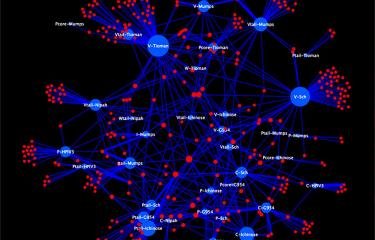The Institut Pasteur is now home to the World Organization for Animal Health Collaborating Center for the detection and identification in humans of emerging animal pathogens and development of tools for their diagnoses. It is hosted by the Environment and Infectious Risks Unit (led by Jean-Claude Manuguerra), with the Laboratory for Urgent Response to Biological Threats and the Pathogen Discovery Laboratory (led by Marc Eloit). This Collaborating Centre recommends, devises, and compares new laboratory testing methods and procedures for detecting and identifying emerging animal pathogens in humans.
At its World Assembly of Delegates held between May 26 and 31, 2019, the World Organization for Animal Health (the acronym OIE stands for Office internationale des épizooties, its original name coined in 1924) selected the application submitted by the Institut Pasteur, a project "that will strengthen links with the OIE as foreseen in the collaboration framework agreement signed in 2015 between our two organizations," explains Nadia Khelef from the Department of International Affairs. "This collaborating center did not previously exist and was set up at the request of the Institut Pasteur via the OIE delegate for France," adds Jean-Claude Manuguerra, head of the OIE Collaborating Center (OIECC).
The Institut Pasteur is hosting this OIECC to encourage collaboration, particularly between the fields of human health and animal health through a "one health" approach. "The World Health Organization has collaborating centers in veterinary institutes," explains Jean-Claude Manuguerra. "The OIE, on the other hand, has (a limited number of) collaborating centers in organizations involved in human health and emerging diseases in particular."
With the Institut Pasteur (Paris) already involved, the Institut Pasteur International Network may also contribute depending on its member institutes' respective missions and the will to share fieldwork within the Network.
The Institut Pasteur already hosts 14 national reference centers (page in French) for human infectious diseases and seven WHO collaborating centers (page in French), as well as two OIE reference laboratories (reference laboratory for Rift Valley fever and reference laboratory for Crimean-Congo hemorrhagic fever, led by Noël Tordo). Collaborative work between the OIECCs, CNRs and WHOCCs enables a "cross-disciplinary and complementary approach to expertise, notably with a view to characterizing emerging pathogens with zoonotic potential and developing diagnostic tests," explains Jean-Claude Manuguerra.
This study is part of the priority scientific area Emerging infectious diseases of the Institut Pasteur's strategic plan for 2019-2023.





